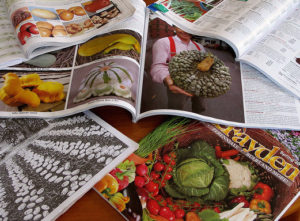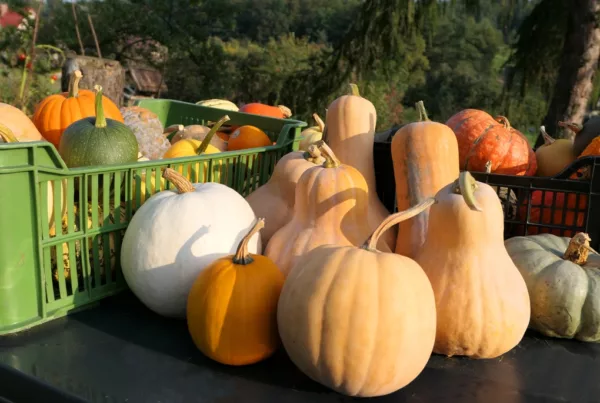 “I have seen women looking at jewelry ads with a misty eye and one hand resting on the heart, and I only know what they’re feeling because that’s how I read the seed catalogs in January.” – Barbara Kingsolver – Animal, Vegetable, Miracle
“I have seen women looking at jewelry ads with a misty eye and one hand resting on the heart, and I only know what they’re feeling because that’s how I read the seed catalogs in January.” – Barbara Kingsolver – Animal, Vegetable, Miracle
By now, you’ve probably started getting seed catalogs in the mail – you may have even gotten some before the holidays. Don’t get overloaded and overwhelmed!
Inventory the seeds you already have
If you haven’t already opened them up . . . DON’T! The first thing you should do is see what seeds you already have. Check the seed packet and look for a “Packed for” year. Make a list of them and along with the “packed for” year. Too many gardeners buy duplicates of what they already have. If you’ve stored them properly, most seeds last a minimum of five years.
Here’s what Mel Bartholomew had to say: “What happens to seeds that are in storage? As they grow older, their germination rate (the percentage that sprouts under ideal conditions) gradually diminishes. But the solution is very simple. Plant a pinch of seeds – just two to three instead of only one to ensure that at least one will sprout. If your seeds are many years old, test the germination rate yourself or just plant three or five or however many seeds depending on how well they sprouted the year before. If you marked the sprouting rate on the packet, you can reasonably estimate how many to plant the next year.”
 Do some planning
Do some planning
At this time, sketch out your raised beds and see how many squares you have. With proper planning you’ll be able to use each square 2-3 times in a growing season: 4 leaf lettuces early in spring followed by a pepper plant in the summer and 9 small beets for your fall garden. If you don’t have extra squares, don’t buy extra seeds.
Take that list of seeds you already have then list the seeds you need. Not what you want, but what you really need. At this time you may also want to set a spending limit, and don’t forget shipping costs. If you have money leftover in your seed budget, then you can add a second column to your list with what you want. We encourage everyone to try one new crop a year, this is especially great to get children to try more things, but only if your garden space and budget allow.
Then shop!
Now, you can grab the seed catalogs, but don’t settle into the sofa with a mug of coco, a notepad and a pencil quite yet. Instead sit at the kitchen table with the recycling bin next to your chair. Open up the first catalog and see if it gives enough information. Don’t judge a book, or catalog, by its cover, or the slick paper they use, or anything else. If they don’t provide you with enough growing information – zone range, days to maturity, how tall and wide the mature plant will be, sun needs, etc. If it doesn’t give you enough information on how and where to grow your plants . . . recycle it. You need useable information, not an overabundance of descriptive words and pretty pictures.
After all that’s done, it’s finally time to get all comfy cozy on a chilly winter’s day with the remaining seed catalogs and your lists. Before you place your order, we encourage you to check a well-stocked local nursery or garden shop to see if they carry what you want. Support your local businesses whenever you can. Plus you might just save on shipping costs!



